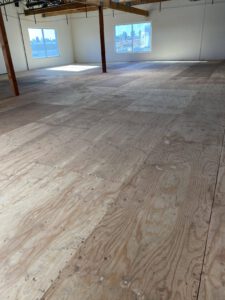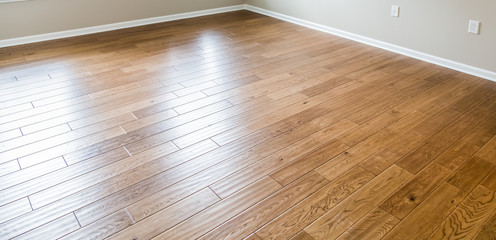Epoxy is a floor coating that can be applied to any concrete surface. It is resistant to chemicals, scratches, and other wear and tear.

Epoxy floors are easy to sanitize and can be used in hospitals, veterinary clinics, manufacturing plants, and other areas that require a durable flooring system. These floors are also attractive and add value to any property. Read on Epoxy Flooring WV to learn more.
Epoxy floors are extremely durable and hold up well to heavy traffic, but they are not indestructible. Like any surface, they can be damaged by liquid spills, dirt, and dust. Regular cleaning and maintenance will help prevent damage and keep your floors looking new for years to come.
Sweeping and mopping are vital parts of maintaining your epoxy floors. You should sweep your floors on a daily basis, or even twice a day in high-traffic areas. You should also vacuum your floor often with a soft brush attachment to collect any dirt or grit that has accumulated on the surface. Dirt and grit can scratch your epoxy floors, so it’s important to remove them as often as possible.
Using a commercial floor cleaner with water will keep your floors clean and free from residue. You should avoid using vinegar or any other acidic cleaners, as they can etch the surface of your epoxy and cause it to become dull and discolored over time.
While epoxy floors are resistant to most chemicals, it’s important to always wipe up any chemical spills as soon as they occur. This will not only prevent stains, but it will also protect the environment and people in your workspace. For small stains, you can use a paper towel or sponge to soak up the liquid. For more stubborn stains, you can try using a kitchen scrubbing sponge or a soft deck brush and warm water to scrub the spot.
If your floors experience a lot of wear and tear, you may need to scrub them on a weekly or biweekly basis. This will depend on the amount of dirt and debris that accumulates on the surface. You should use a commercial floor scrubber with a soft brush attachment for the best results. To help your floors last longer, you can place a walk-off mat at the entrance of your workspace to catch all the dust and dirt before it makes its way onto the epoxy floor coating. You can also place cardboard or carpet under motorcycle and bicycle kickstands to prevent them from dragging on the floor and damaging the epoxy.
Durable
Whether you’re looking for flooring that’s attractive and slip-resistant or durable enough to stand up to heavy equipment, chemicals, and oil spills, epoxy floors are the answer. They are also extremely cost-effective and require little maintenance compared to other options.
Epoxy floors are made from a tough resin and hardener, which are combined together for a chemical reaction that forms the hardened material. These floors are strong and able to stand up to the elements, making them ideal for garages, industrial spaces, or even residential living rooms. They can be customized to fit your specific needs, with various colors and patterns available for an aesthetic appeal that’s as unique as you are.
The durability of epoxy floors is often a concern for customers, but it’s important to remember that the quality of the application is just as crucial as the material itself. When a floor is not applied correctly, it can be susceptible to moisture damage, environmental harm, and microbial infestation. It’s essential to hire a team of specialists who have the experience necessary to complete your project properly.
Once your floors are installed, they will last for years to come as long as they receive proper care and maintenance. A thorough cleaning on a regular basis will go a long way in extending the life of your floor as well as keeping it looking like new.
If you use your garage as a workshop, you’ll want a floor that can accommodate the heavy machinery and harsh materials used in car upkeep without causing damage to the flooring or causing accidents. With an epoxy garage floor, you’ll be able to keep your vehicle in the garage all year without having to worry about the temperature or weather affecting its performance.
If you have a gym, your floor will need to be able to withstand the heavy weights and vibrations of large pieces of equipment. A dingy floor is a trip or slip waiting to happen, but with a smooth epoxy finish, your employees will be less likely to sustain injuries.
Aesthetically Pleasing
Aside from their practical uses, epoxy floors are aesthetically pleasing and can be used in a variety of settings. They can add value to homes and are an attractive choice for commercial and industrial areas. In addition, they are resistant to stains and chemicals. This makes them an excellent option for garages, basements, and other areas that are susceptible to spills. Moreover, epoxy is easy to maintain, so it will keep its attractive appearance for years to come.
One of the best things about epoxy flooring is that it can be installed in a very short period of time. If you hire a professional, the entire process can be completed in two days or less. The first step is to prepare the floor for the installation, which can be done by removing any furniture and either mechanical grinding or chemical etching. It is important that the surface is clean and smooth to ensure good adhesion. You should also make sure to remove any stains that are present on the floor.
Once the floor has been prepped, a resin and hardening agent are mixed and then applied to the concrete. It takes a few days for the coating to cure and harden, but it is a much quicker solution than other types of flooring. Additionally, it is less expensive than other types of floor coverings.
Epoxy floors are also customizable to meet a variety of design and color requirements. They can be mixed with various additives to create different finishes. For example, they can be colored to match the rest of the room or have a shimmering effect. They can even be made to resemble concrete or marble. The options are endless.
Another great benefit of epoxy is that it can be refinished when it starts to show signs of wear. This means that you can continue to use your floor for a long time without having to spend money on replacements. However, if you decide to refinish your epoxy floor yourself, it is important to follow the manufacturer’s recommendations for mixing and application. Otherwise, you may damage the coating and make it sticky or dull.
Versatile
Epoxy is very versatile and can be used in a wide variety of settings. It is also very affordable, making it a great choice for many commercial and residential spaces. This type of flooring is available in a range of colors and textures and can be used to create unique designs that will enhance the appearance of any room. It is easy to clean and sanitize and is resistant to staining and other damage. This type of flooring is also ideal for garages, basements, and workshops because it can withstand heavy equipment and vehicles without becoming damaged or cracked.
One of the most important factors in ensuring that an epoxy floor is successful is proper surface preparation. The concrete must be free of cracks, chips, and other debris before the application of the epoxy coating can begin. This is because the concrete underneath will not be able to bond with the epoxy properly if any of these problems are present.
To ensure that the floor is prepared correctly, professionals will use various methods, including diamond grinding and media blasting. They will also remove any contaminated materials from the area and degrease the slab, if necessary. This is because it is important to ensure that the epoxy has a strong and secure bond to the substrate and that any oils or other chemicals will not be able to seep through and cause problems down the line.
Another advantage of epoxy is that it is easy to maintain. It is much easier to sweep and mop than a typical concrete floor, which can save you money on cleaning supplies over time. It is also abrasion and impact resistant, so it will not be damaged by heavy machinery or dropped tools.
This versatility makes epoxy flooring the perfect option for any home or business, whether it is a garage, basement, or workshop. It is easy to keep clean and sanitized, and it can be adorned with unique patterns and swirls for a stunning visual effect. Unlike other types of flooring, it is very durable and can last for decades with little to no wear.

